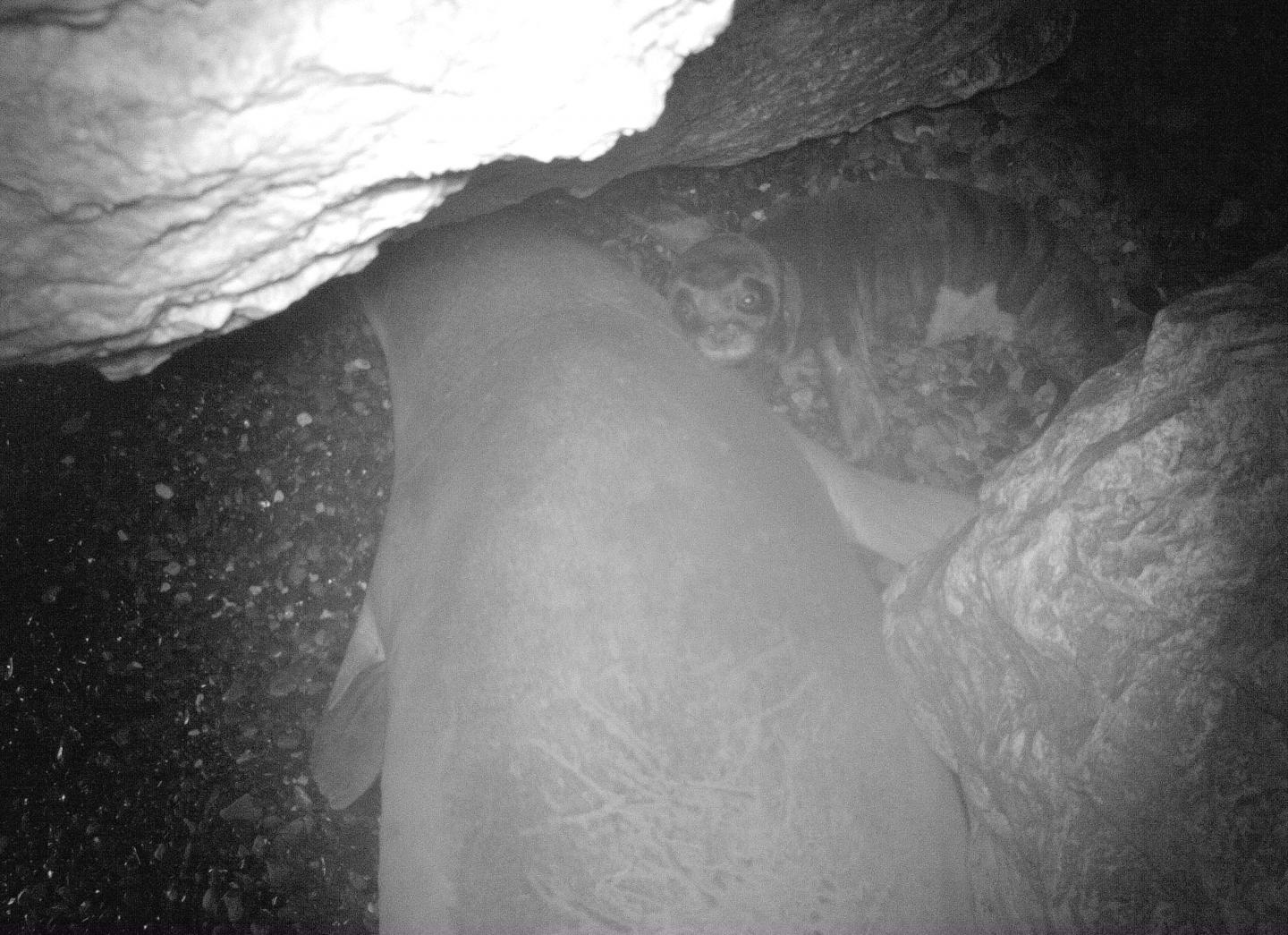World's rarest seals have a secret breeding cave in Cyprus
Only 700 Mediterranean monk seals are left in the wild.

The world's rarest seals have been caught on camera in secret breeding caves in northern Cyprus. The new breeding sites provide hope for a struggling species, but the caves are now in need of protection.
Mediterranean monk seals (Monachus monachus) are the most endangered of all the pinniped species — a group that includes seals, sea lions, sea otters and walruses — with just 700 individuals left in the wild, according to the International Union for Conservation of Nature Red List of endangered species. A large number of those seals live in and around Cyprus.
Due to human pressures, such as bycatch and tourism, the monk seals have been forced to raise their pups inside cave systems, rather than their usual open beaches, on the island. A new study using camera traps, carried out by researchers from the University of Exeter in the U.K. and the Society for the Protection of Turtles (SPOT) in Cyprus, has revealed several previously unknown breeding caves in northern Cyprus, the first to be found along the north coast of the island.
Related: Photos: Stunning shots of the natural world and wildlife
"The study has found regular breeding, identified important sites and shown some seals are using the site year after year," lead author Damla Beton, a marine biologist at SPOT, said in a video about the study. "It is very important to make sure that these sites are protected."
Forced into caves
For centuries fishers across the Mediterranean have killed monk seals for a variety of reasons: the seals damage their fishing gear; they compete for the same fish prey; and the seal skin can be sold on the black market for its unsubstantiated health benefits. More recently, fishers have captured the seals for use in the aquarium trade as performers; meanwhile, the pinnipeds have lost habitat to the tourism industry, according to the Seal Conservation Society in the U.K..
Historically, monk seals would have used beaches as places to rest and raise their pups like every other species of seal. However, because of historic hunting and a lack of undistrubed beaches, they have been forced to start using alternative locations.
Get the world’s most fascinating discoveries delivered straight to your inbox.

"They need caves to breed in and raise their pups out of sight of humans," Beton said.
Although the caves keep the monk seals and their pups safe, only a small number of caves monitored are suitable for pupping, according to the researchers.
In 2007, a survey found 39 breeding caves on the south coast of Cyprus (although several have since been destroyed), according to the researchers. However, despite frequently being seen in the north of the island, there was no evidence the seals were breeding there.
"It has long been known that they use north Cyprus coasts, but in 2013 we observed a pup in Alagadi [in north Cyprus], which confirmed them breeding," Beton said in the video. "In 2016, we started the first breeding surveys using camera traps placed in caves."

The research continued until 2019 and revealed that, out of the eight caves monitored, the seals were using three for breeding. At one of the caves, a single seal also managed to successfully raise pups three years in a row, suggesting that these caves are high-quality breeding sites and could play an important role in keeping population numbers up.
Protecting the remaining monk seals
The discovery of new monk seal breeding sites is welcome news to conservationists, but they say now it is important to protect these sites for the future.
"This area of coastline is being developed rapidly, especially for construction of hotels," Robin Snape, an environmental biologist at the University of Exeter, said in a statement. "The main breeding site we identify in this study currently has no protected status, and we are working with local authorities to try to change this."
However, losing their breeding sites is not the only challenge facing the monk seals. "Another major threat to monk seals in this area is bycatch," Beton said in the statement. This means they get accidentally caught in a fisher's nets, which often causes them to drown before they can be freed.
"We need to work with fishers to secure food sources for monk seals and prevent bycatch, especially around these caves," Beton said in the video.
The study was published online March 2 in Oryx - the International Journal of Conservation.
Originally published on Live Science.

Harry is a U.K.-based senior staff writer at Live Science. He studied marine biology at the University of Exeter before training to become a journalist. He covers a wide range of topics including space exploration, planetary science, space weather, climate change, animal behavior and paleontology. His recent work on the solar maximum won "best space submission" at the 2024 Aerospace Media Awards and was shortlisted in the "top scoop" category at the NCTJ Awards for Excellence in 2023. He also writes Live Science's weekly Earth from space series.
 Live Science Plus
Live Science Plus





